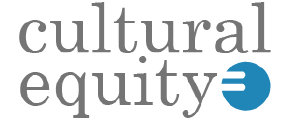Accredited NGOs located in this country
The list of accredited NGOs is presented below, along with corresponding accreditation forms. You can search the list using the criteria provided on the right.
| 9 organizations or institutions match your query. | |
| Name, address and source | Accreditation |
|---|---|
| American Folklore Society 800 East Third Street Bloomington IN 47405 United States of America URL: https://americanfolkloresociety.org Tel.: 812-856-2346 |
Next report due 2029
DetailsAccredited in 2024 (Request: English) - No. 90563 Decision-making meeting: 10.GA - 2024 |
| Art for Refugees in Transition, INC - A.R.T. 100 Bank Street, 5G, New York 10014 New York United States of America URL: https://artforrefugees.org Tel.: 917-757-6191 |
Next report due 2027
DetailsAccredited in 2022 (Request: English) - No. 90484 Decision-making meeting: 9.GA - 2022 |
| Blanchard House Institute 406 Dr. Martin Luther King, JR., Boulevard Punta Gorda, FL 33950 United States of America URL: https://blanchardhouseinstitute.org Tel.: +1 (813) 344-9674 |
Next report due 2029
DetailsAccredited in 2024 (Request: English in preparation) - No. 90597 Decision-making meeting: 10.GA - 2024 |
| Cultural Survival, Inc. 2067 Massachusetts Ave, Cambridge, MA 02140 United States of America URL: https://cs.org Tel.: 617-441-5400 |
Next report due 2027
DetailsAccredited in 2022 (Request: English) - No. 90501 Decision-making meeting: 9.GA - 2022 |
| Pacific Traditions Society POB 189 Anahola H1 96703 United States of America URL: https://www.vaka.org Tel.: 808 93 68 462 |
Next report due 2029
DetailsAccredited in 2020 (Request: English) - No. 90425 Decision-making meeting: 8.GA - 2020 |
| Répertoire International de Littérature Musicale International Repertory of Music Literature [en] 365 Fifth Avenue, Suite 3108 New York United States of America URL: https://rilm.org Tel.: + 1 212 817 1991 |
Next report due 2029
DetailsAccredited in 2024 (Request: English) - No. 90527 Decision-making meeting: 10.GA - 2024 |
| Smithsonian Center for Folklife and Cultural Heritage 600 Maryland Avenue, SW, Suite 2001 Washington DC 20010 United States of America URL: https://www.folklife.si.edu Tel.: +1-202-633-1141; +1 703-915-2843 |
Next report due 2027
DetailsRenewed in 2023 (Activity report: English) Accredited in 2018 (Request: English) - No. 90391 Decision-making meeting: 7.GA - 2018 |
| Society of Native Nations 10730 Potranco Road Suite 122-282 TX 78251-3327 San Antonio United States of America URL: https://societyofnativenations.org/ Tel.: +1 210-468-8201 |
Next report due 2029
DetailsAccredited in 2024 (Request: English) - No. 90596 Decision-making meeting: 10.GA - 2024 |
 The Association for Cultural Equity The Association for Cultural Equity425 E. 25th Street Suite 1000 New York NY 10010 United States of America URL: https://www.culturalequity.org Tel.: 212-268-4623 |
Next report due 2029
DetailsDownload brochureAccredited in 2020 (Request: English) - No. 90455 Decision-making meeting: 8.GA - 2020 |